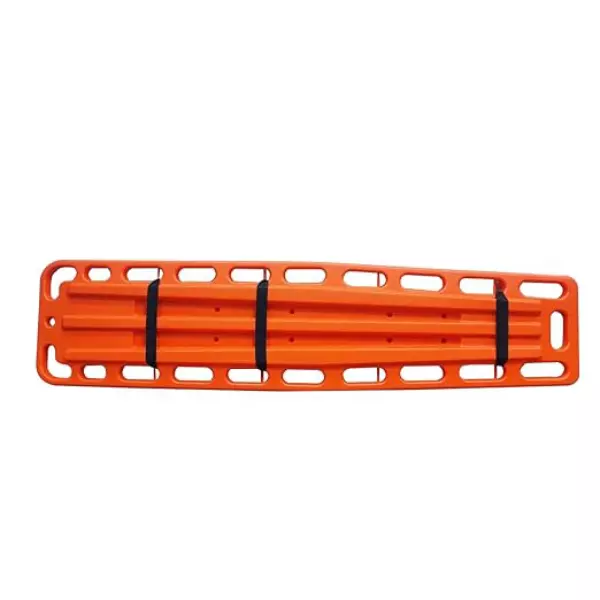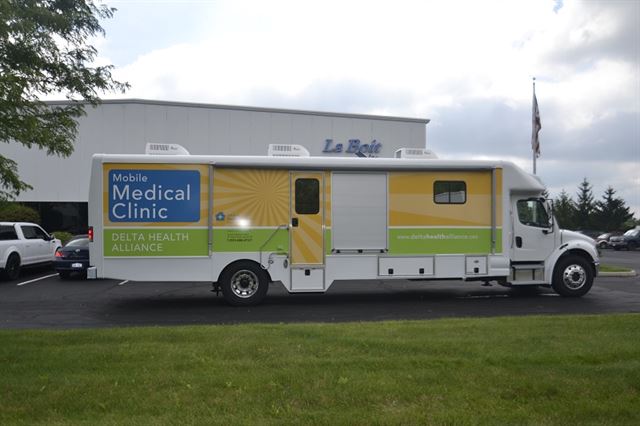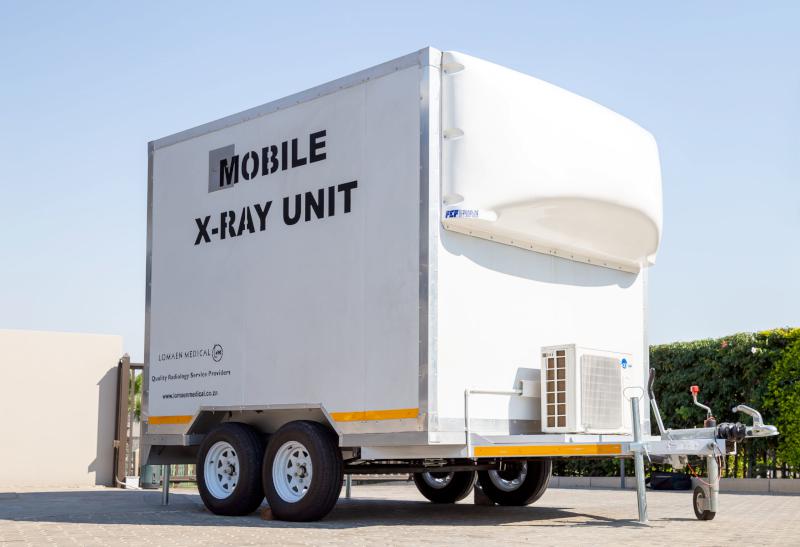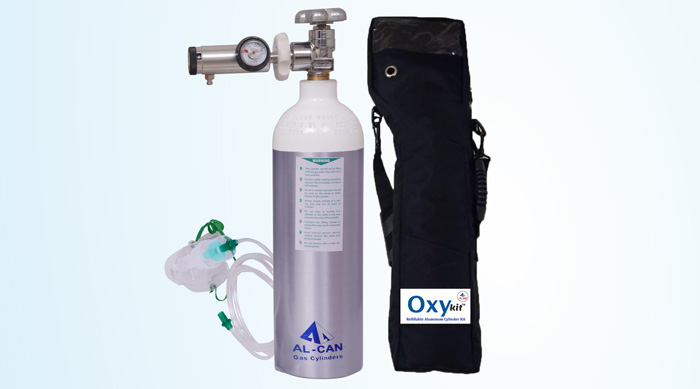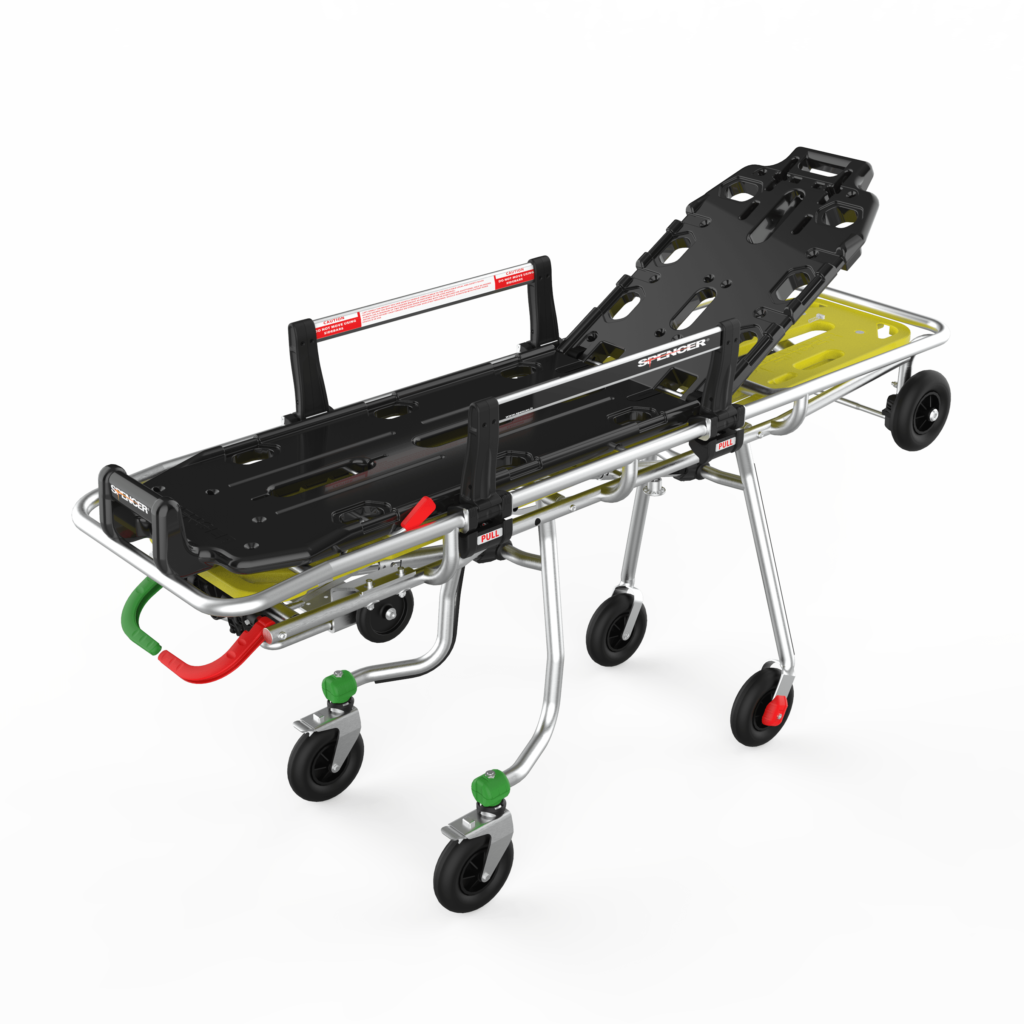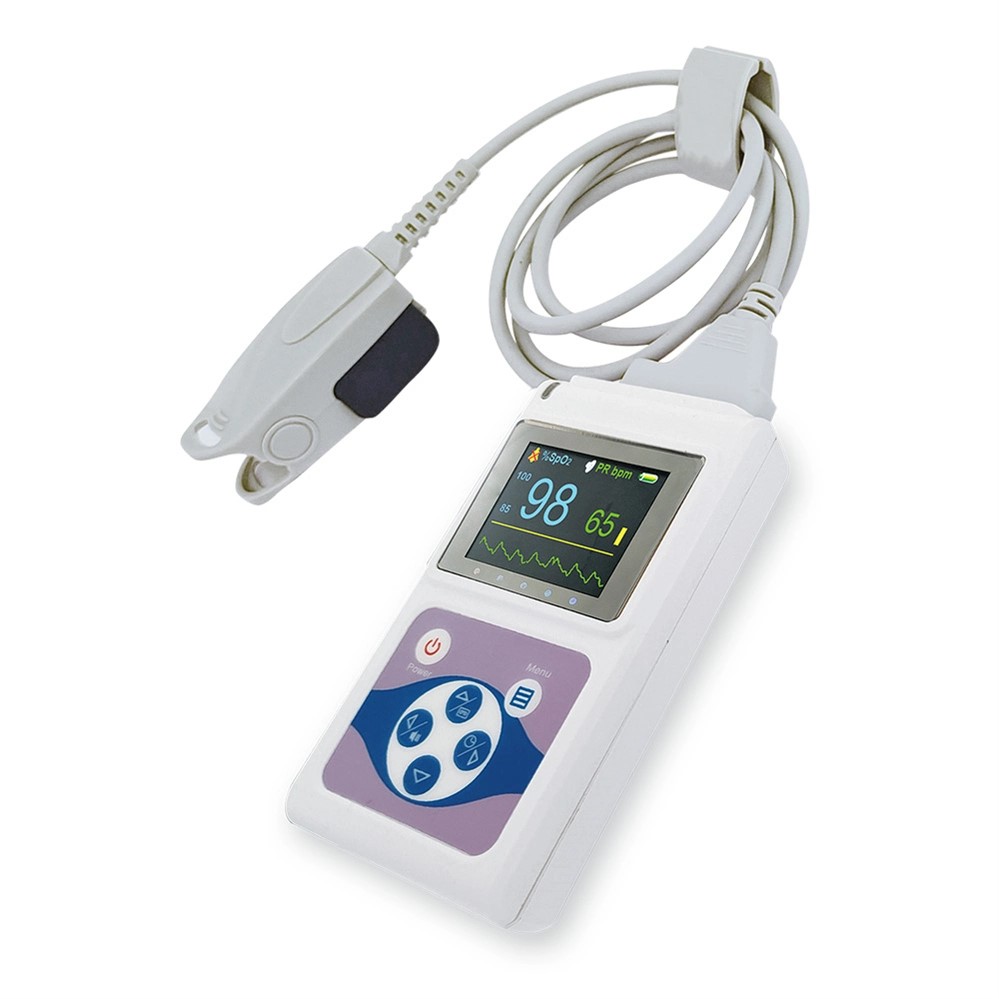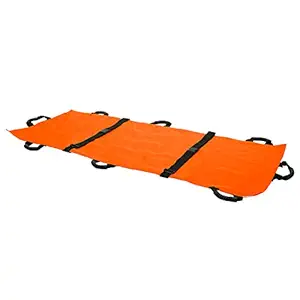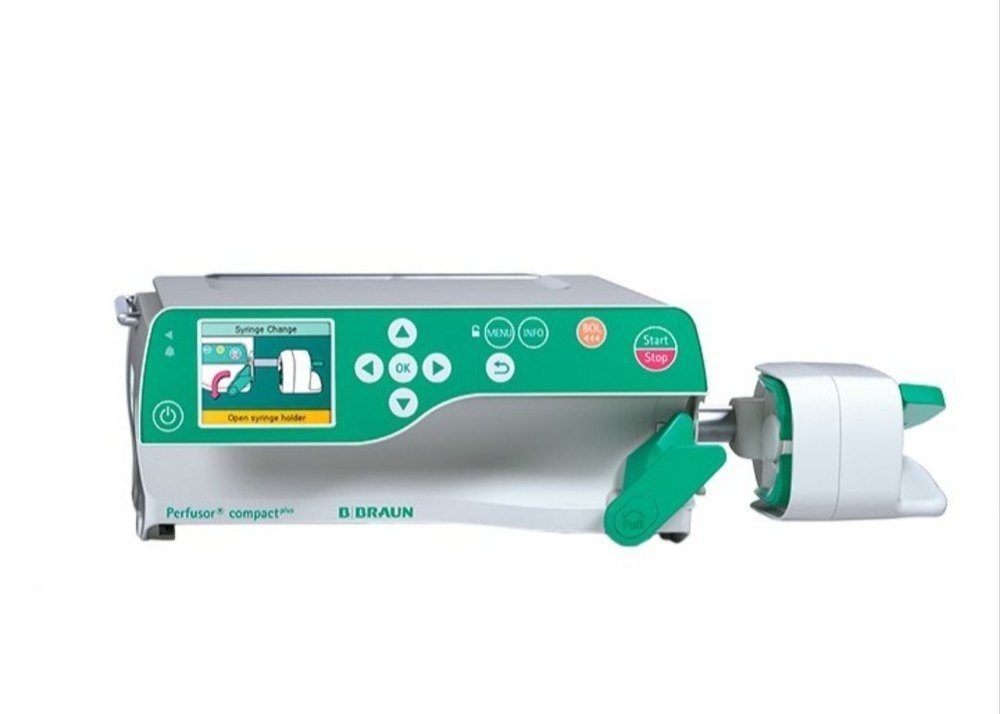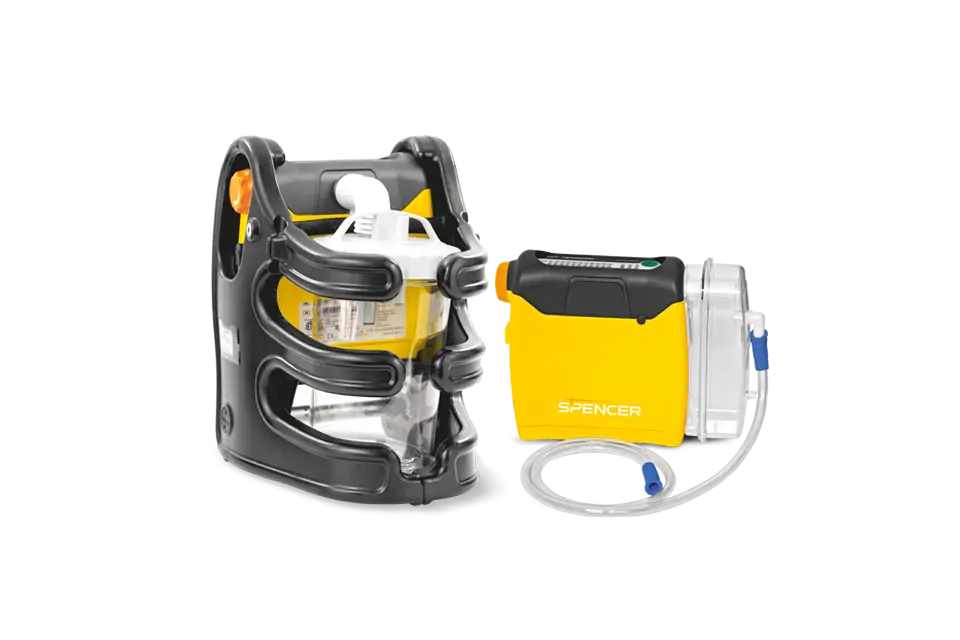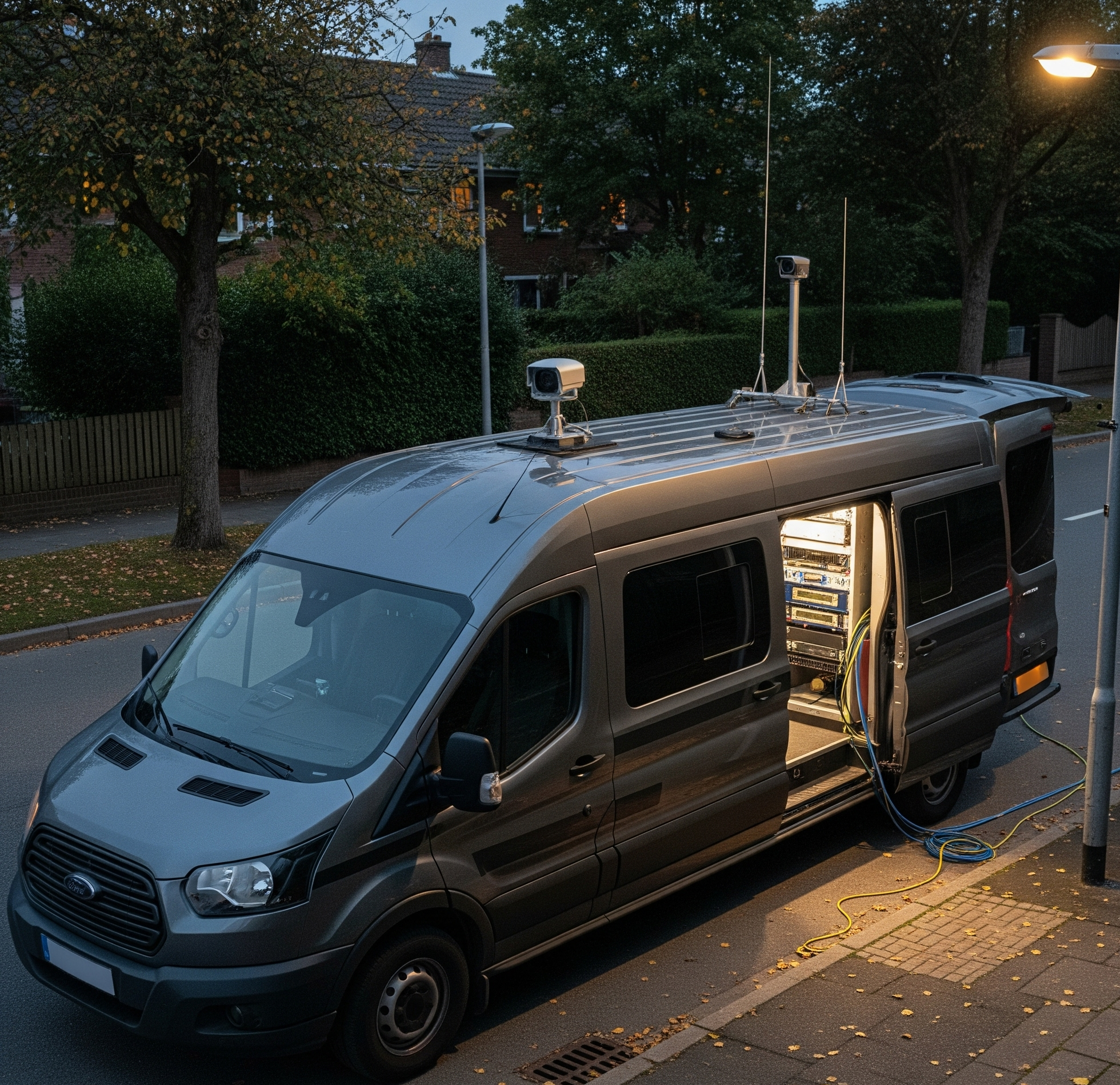A spine board is an essential emergency device used to immobilize and safely transport patients with suspected spinal, neck, or back injuries. It is a flat, rigid board made from durable materials like plastic or fiberglass, designed to keep the spine in a stable, straight position. The board is long enough to support the entire body and features handles on the sides for easy carrying. Patients are secured to the spine board with straps and head immobilizers, which prevent movement and reduce the risk of worsening any spinal injuries. Lightweight and versatile, the spine board is commonly used in emergencies such as car accidents, falls, or sports injuries and is compatible with other equipment like cervical collars. Its primary purpose is to protect the patient’s spine during rescue and transport, ensuring their safety and preventing further harm.
Mobile Medical Unit ( MMU )
A Mobile Medical Unit in a hospitality vehicle is a fully equipped van or bus designed to deliver medical care in various locations. It features essential medical equipment and supplies, including exam tables, diagnostic tools, and emergency care items, all within a mobile setting. This setup allows healthcare professionals to provide a range of medical services directly to patients, whether in remote areas, during large events, or in underserved communities. The unit is designed for flexibility and convenience, ensuring that patients receive timely and effective care wherever the vehicle can reach. Its advanced features and mobility make it a valuable resource for expanding access to healthcare and addressing medical needs in diverse environments.
Mobile Radiography Van
A Mobile Radiography Van is a specialized van equipped with advanced radiographic technology for on-site imaging services. It includes a radiography machine for capturing X-ray images, along with a control area for technicians to operate the equipment and review images. This setup allows for diagnostic imaging to be performed directly at the patient’s location, whether in remote communities, during emergencies, or at large-scale events. The van is designed for mobility and efficiency, featuring space for patient preparation and image processing. It helps improve access to critical diagnostic services by reaching areas where traditional radiology facilities might not be available. Its versatility ensures that patients can receive essential imaging without the need for extensive travel, enhancing overall healthcare delivery.
Oxygen Cylinder
An oxygen cylinder is a portable device used to store and provide oxygen to patients in need, particularly during emergencies. It consists of a strong, high-pressure metal tank, typically made from aluminum or steel, which holds oxygen in a compressed form. The cylinder is equipped with a valve that controls the flow of oxygen, and it connects to an oxygen delivery system like a mask or nasal cannula through a tube. Designed for portability, the cylinder often includes a handle or wheels to facilitate easy movement and transport. Available in various sizes to match different oxygen needs, the cylinder can be refilled at medical supply facilities when depleted. In emergencies, an oxygen cylinder is essential for ensuring a steady and immediate supply of oxygen, aiding patients in breathing more easily and receiving the necessary medical care.
Stretcher Trolly
A stretcher trolley is a portable medical device designed to safely transport patients in emergencies. It features a flat, cushioned surface for the patient to lie on, made from sturdy materials like metal or strong plastic to provide reliable support. The trolley is often adjustable, allowing different sections to be elevated or lowered to position the patient comfortably. Mounted on wheels, it is easy to maneuver and can be locked in place to ensure stability when stationary. Safety straps or belts are used to secure the patient, and some models have side rails for additional support. Essential in emergencies, the stretcher trolley ensures a stable, secure, and comfortable means of moving patients to receive prompt medical care.
Pulse Oxymeter
A Pulse Oximeter is a portable device used to measure the levels of oxygen in a person’s blood and their heart rate, providing crucial information in emergencies. It works by clipping onto a fingertip, earlobe, or toe and using light sensors to detect the amount of oxygen in the blood and the heartbeat. The device displays two key readings on a small screen: oxygen saturation (SpO2), which indicates the percentage of oxygen in the blood, and heart rate (bpm), showing the number of heartbeats per minute. Non-invasive and easy to use, the pulse oximeter is compact and lightweight, making it ideal for quick assessments in various settings. It helps medical professionals quickly determine if a patient is receiving adequate oxygen and monitor their heart rate, which is essential for effective emergency care and treatment.
Rexine Stretcher
A Rexine stretcher is a lightweight and portable emergency device used to carry patients. It is made from Rexine, a durable, waterproof synthetic fabric that is strong enough to support the patient’s weight. The stretcher consists of this Rexine fabric stretched between two metal poles, making it both sturdy and easy to clean. Due to its lightweight design, the Rexine stretcher is easy to carry and can be rolled up or folded for convenient storage and transport. It is typically used for short-distance patient transport, such as moving someone from an accident scene to an ambulance or within a hospital. Its durability and weather resistance make it a practical tool for quickly and efficiently transporting patients in various emergency situations.
Syringe Pump
A syringe pump is a portable medical device used to deliver precise amounts of medication or fluids to a patient. It works by holding a syringe filled with the required substance and using a motor to push the syringe’s plunger at a controlled rate. This ensures a steady and accurate flow of medication over a set period. The pump allows healthcare providers to adjust settings to deliver specific rates and volumes, making it essential for precise dosing, particularly in emergency situations. Designed to be compact and user-friendly, the syringe pump can be easily used in various settings, such as ambulances or emergency rooms. It features a display and controls that enable medical staff to program and monitor the pump, ensuring patients receive the exact dose needed for effective treatment and stabilization.
Suction Machine
A suction machine is a portable medical device designed to remove fluids, such as mucus or blood, from a patient’s airway to help them breathe more easily. It operates by using a pump to create a vacuum that pulls fluids from the patient’s mouth, throat, or other areas where blockages might occur. The machine features adjustable settings to control the suction strength, ensuring it can be used safely and effectively based on the patient’s needs. Compact and lightweight, the suction machine is easy to move and use in various emergency settings, including ambulances, emergency rooms, or at the scene of an accident. It typically includes a collection canister for holding the removed fluids and filters to maintain cleanliness. In emergency situations, the suction machine is essential for quickly clearing obstructions from the airway, helping to maintain a clear and open breathing passage until further medical care is provided.
Surveillance Van
A Surveillance Van is a high-tech mobile unit designed for monitoring and securing various locations. It includes sophisticated surveillance equipment such as multiple cameras, video recording systems, and communication devices, allowing for comprehensive monitoring of events or areas. The van is equipped with a control center where security personnel can view live footage, manage recordings, and communicate with other team members. Its mobility allows it to be quickly deployed to different sites, such as large events, festivals, or remote locations, providing on-site security and real-time surveillance. The vehicle is designed for flexibility and efficiency, ensuring it can adapt to various security needs and enhance safety wherever it is stationed.

